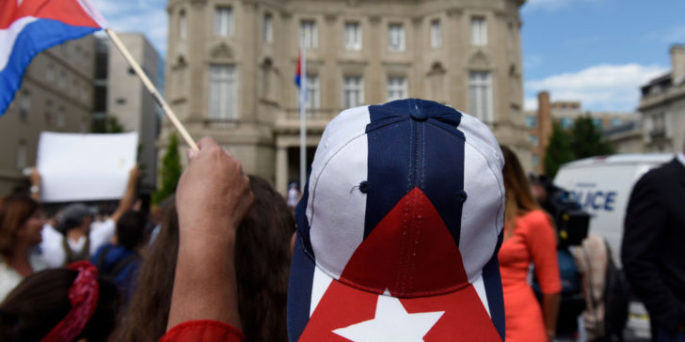
What do a Puerto Rican model, an Italian model, and a Canadian fitness coach have in common? All of their identities have been used by the Cuban government to create fake social media accounts promoting the regime ahead of the vote for National Assembly (NA) members.
As voting day approaches, the government seems concerned with legitimacy and the impact it could have on the historical leadership change taking place. And with good reason. Last November, a record number of Cubans abstained or cast protest votes in a fraudulent process for municipal representatives (read more here). March 11, Cubans will again vote in a fraudulent process, this time with the end result being a new president.
Cuba’s indirect electoral system allows for only one direct vote at the municipal level. At the National Assembly level, candidates are named by the centrally appointed Candidacy Commission and the municipal assemblies. Citizens will vote for to “affirm” a field of candidates chosen for their loyalty to the regime. Those selected will be tasked with choosing from within themselves the Council of State and the Council of Ministers—and the President of both Councils. Historically, the one who holds the office of President of the Councils of State is recognized as Cuba’s “president.”
The end of Castros in leadership?
Fidel and Raul Castro have been the only two presidents of Cuba since 1976. Many now in power are octogenarians and participated in the 1959 revolution. Raul stepping down from the presidency represents a generational shift. Coming into office, he indicated that he would leave after a second term (ending this April) and has proposed a new age limit of 70 for party and NA members to hold leadership positions. This would force other historical figures, especially within the military, to retire. This, combined with a ceremony indicating the possible retirement of three inner circle figures, has caused speculation about Cuba’s future leadership.
April 19 will be the first time in over 40 years that a Castro is not the president of Cuba. Most anticipate 57-year old First Vice-President Miguel Díaz-Canel to be chosen. Some speculate that the regime may tap the next generation of Castros for office. However, the president must come from the National Assembly, which eliminates the possibility for Raul Castro’s son, Alejandro Castro Espín, head of the National Defense and Security Commission, of legally being president.
Others point to the possibility of Raul’s daughter Mariela, a photogenic and apparently progressive young regime spokeswoman who leads the government’s national center for sex education. It is also possible for some of the generals, such as José Ramón Machado Ventura or Ramiro Valdés Menéndez, to take control and halt the generational hand-off.
Window dressing
This is a change in the way that the Cuban regime looks, not how it functions. The Cuban Constitution enshrines the leadership of the Cuban Communist Party (PCC) as the only legitimate political force. No matter who sits in the Presidency, power is still with the PCC and the politburo. While Raul Castro has indicated that he will retire from the Presidency of the Council of State, he will still remain President of the PCC. Whomever the next Council president is, he or she will be closely watched and managed by Raul and the party. In addition to the PCC, Raul will remain head of the armed forces, an incubator for future government officials and a major player in Cuba’s economy. Almost all members of the historical generation have military backgrounds, either in the revolution or in Cuba’s attempts to export its revolution to Africa or to Latin America. Not only does this mean that Raul will remain influential in politics, economy, and national security, it also poses a problem for someone who has no military connection, such as Diaz-Canel.
Even though there is no substantive change coming, it is still worth paying close attention to who will be taking Raul’s place on both councils April 19. This will be the first time in generations where these posts are not held by the president of the councils of state and ministers, inviting some uncertainty.
Issues to look for are whether the incoming president is a moderate or hardliner within the PCC, has military ties, their stance on the constrained but emerging private sector represented by the island’s self-employed. How this person will react to dissidents, the slow reconstruction from the hurricanes, and changing dynamics with both Washington and regional partners will all be indications of the type of rule to come. The new president will need to quickly consolidate legitimacy while dealing with Cuba’s underwhelming economy, low wages and commodity scarcity.
No matter who takes over, this is neither an election nor a move towards democracy. Raul can be expected to remain closely involved in governing. More so, the international community should not expect any lasting changes with his departure as the entire repressive structure is in still in place. Without an empowered civil society promoting a new vision for Cuba, change is a long way off.
Top